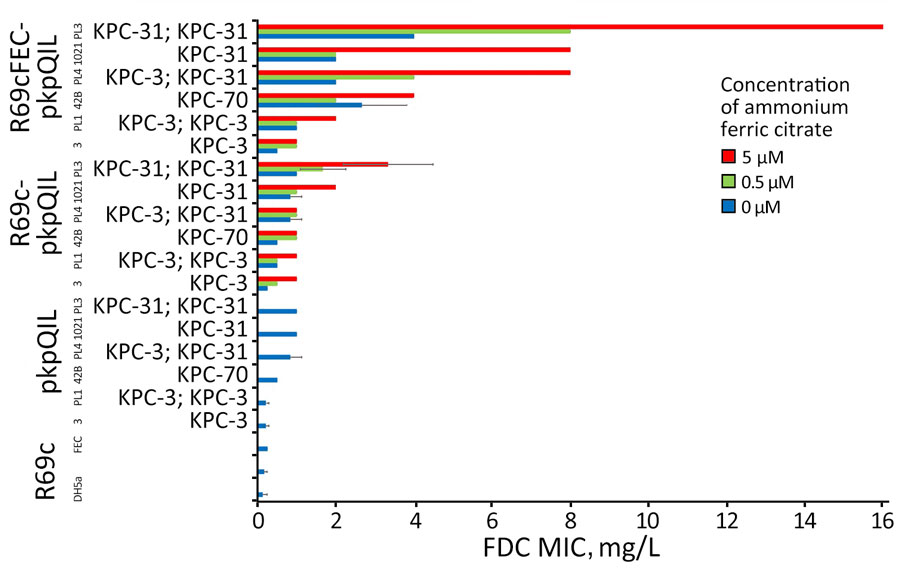Volume 31, Number 1—January 2025
Research
Cefiderocol Resistance Conferred by Plasmid-Located Ferric Citrate Transport System in KPC-Producing Klebsiella pneumoniae
Figure 2

Figure 2. FDC MICs of KPC-producing Escherichia coli in a study of cefiderocol resistance conferred by plasmid-located ferric citrate transport system in KPC-producing Klebsiella pneumoniae. FDC susceptibility tests were performed according to manufacturer directives, with concentrations of 0 µM, 0.5 µM, and 5 µM ammonium ferric citrate on Escherichia coli DH5-α cells carrying different combinations of pKpQIL, R69c, and R69c-FEC plasmids. FDC, cefiderocol; KPC, Klebsiella pneumoniae carbapenemase.
Page created: December 02, 2024
Page updated: December 22, 2024
Page reviewed: December 22, 2024
The conclusions, findings, and opinions expressed by authors contributing to this journal do not necessarily reflect the official position of the U.S. Department of Health and Human Services, the Public Health Service, the Centers for Disease Control and Prevention, or the authors' affiliated institutions. Use of trade names is for identification only and does not imply endorsement by any of the groups named above.